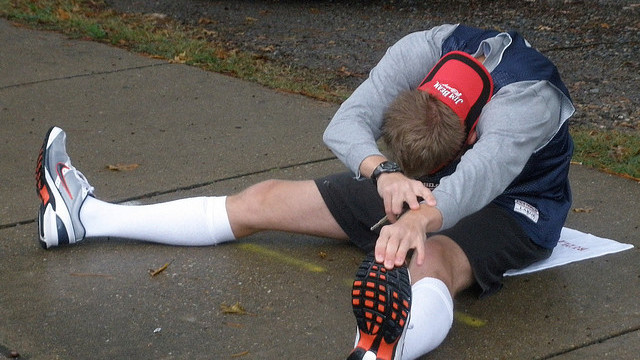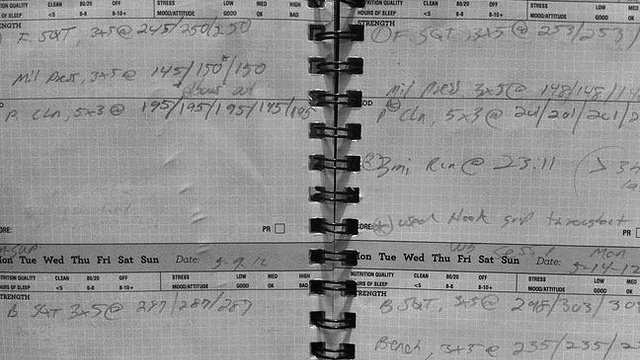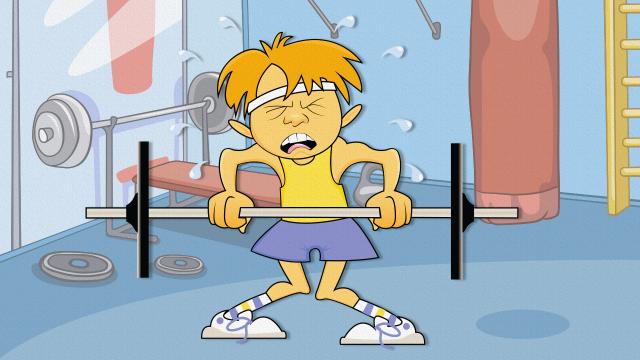Dear Lifehacker, I’ve been exercising for a while, but I’m never really sure if I’m working out as hard as I should be. I’ve been told that pushing yourself until your body practically gives out does more harm than good. So how can I tell if I’m doing enough or not? Thanks, Pushing Phil
Exercise image from Shutterstock
Dear PP,
Don’t worry, you’re not alone. A recent study showed that most of us are terrible at gauging our exercise intensity. Since exercise intensity varies from person-to-person, it’s hard to set down hard and fast rules. However, it’s fairly easy to find your own target intensity. Here’s how to do it.
Track Your Heart Rate
The best way to figure out if you’re exercising hard enough during aerobic exercise is to check your pulse. Your heart rate is a good indicator of how hard you’re working, and if it’s not hitting a certain rate, you’re probably not pushing hard enough. Since we’re bad at actually gauging how we feel when we’re exercising, your heart rate provides a more objective number.
Generally speaking you want your heart rate to stay between 64%-76% of its maximum for moderate exercise and 76%-90% of its maximum for vigorous exercise. To figure out this rate, you need to figure out your maximum heart rate. You can do so with this formula: 211 minus 64% of your age. This gives you an estimate to strive for.
For example, if you’re 30 years old, you’d do 211-19.2, which makes your maximum heart rate around 192 beats per minute. 76% of that is 146. So, you don’t want to let your heart rate get lower than 146 bpm when you’re working out. If you’re new to exercise, it will probably be closer to the lower end of the spectrum. As you exercise more and more, you can increase your intensity. Make sure you can sustain this rate for the recommended 150 minutes of moderate or 75 minutes of vigorous exercise a week.
It’s a good idea to periodically check your heart rate when you’re working out. The video above shows you how to do it manually, but here’s the gist from the Mayo Clinic:
- Stop momentarily.
- Take your pulse for 15 seconds. To check your pulse over your carotid artery, place your index and third fingers on your neck to the side of your windpipe. To check your pulse at your wrist, place two fingers between the bone and the tendon over your radial artery — which is located on the thumb side of your wrist.
- Multiply this number by 4 to calculate your beats per minute.
You can also use a device to track your heart rate for you. A running watch or a heart rate monitor make it easy to glance at your heart rate when you’re working out. As always, everyone’s a little different, but your heart rate provides a good estimate to shoot for.
Pay Attention to How Your Body Feels

We’ve talked before about the myth of “no pain, no gain,” but you still have to push yourself when you exercise. Which is to say, you’re going to be a little uncomfortable during and after working out. This is because when you exercise, you cause microscopic damage to your muscles. The muscle damage causes inflammation and pain, but the muscle then adapts and grows stronger. Recent studies show that intense exercise also affects your sympathetic nervous system, and pushing yourself out slightly past your comfort zone is useful for building muscle.
In short: it’s OK to feel minor to moderate pain or soreness after a workout. If you don’t, you’re probably not working out hard enough. The more you exercise, the more your body adapts, and the more work you have to do. As Men’s Journal editor Daniel Duane writes in the New York Times, there’s just no way around it:
[A]thletic coaches the world over conduct applied research all the time, and know precisely how to get people fit. If you train for a sport, you already know this, whether you realise it or not. Anybody who has trained for a marathon, for example, knows that regardless of what some TV fitness reporter says about some uncontrolled observational study with 11 elderly subjects somewhere in Finland, the web abounds with straightforward marathon-training plans that go like this: Every week for several months, take a few short runs midweek and a single long run on the weekend. Make sure the long run gets a little bit longer each time. Before you know it, you’ll be able to run 26.2 miles.
Those plans works for the same reason Mr. Rippetoe’s protocol works: The human body is an adaptation machine. If you force it to do something a little harder than it has had to do recently, it will respond — afterward, while you rest — by changing enough to be able to do that new hard task more comfortably next time. This is known as the progressive overload principle. All athletic training involves manipulating that principle through small, steady increases in weight, speed, distance or whatever.
So, if you don’t feel a little sore after a workout, push yourself a little harder next time. You’ll need to keep an eye on this because your body adapts. That said, if you’re ever in pain after a workout, you’ve gone too far. Take a couple of days off to recover and give it another shot.
Periodically Reassess Your Workout

As your body gets used to exercise, you hit plateaus. To correct for this, you’ll want to change things as you go.
How you do this depends on the type of exercise you’re doing. If it’s cardio, you can go further or increase your pace. Again, check in with your heart rate when you’re doing it to make sure you’re staying within your zone. Otherwise, mix up what you’re doing to keep it interesting. Either way, you need to keep an eye on your heart rate and make sure you’re pushing your body a little bit more sometimes.
Cheers
Lifehacker
Got your own question you want to put to Lifehacker? Send it using our [contact text=”contact form”].

Comments
2 responses to “Ask LH: How Can I Tell If I’m Exercising Hard Enough?”
what you are eating is important.
I thought I’d plateaued but all it was was eating too much for the exercise
Click bait and I’m not even complaining!
not gonna lie, I clicked just to see more of the first pic, didn’t even read the actual thing made up of words under it